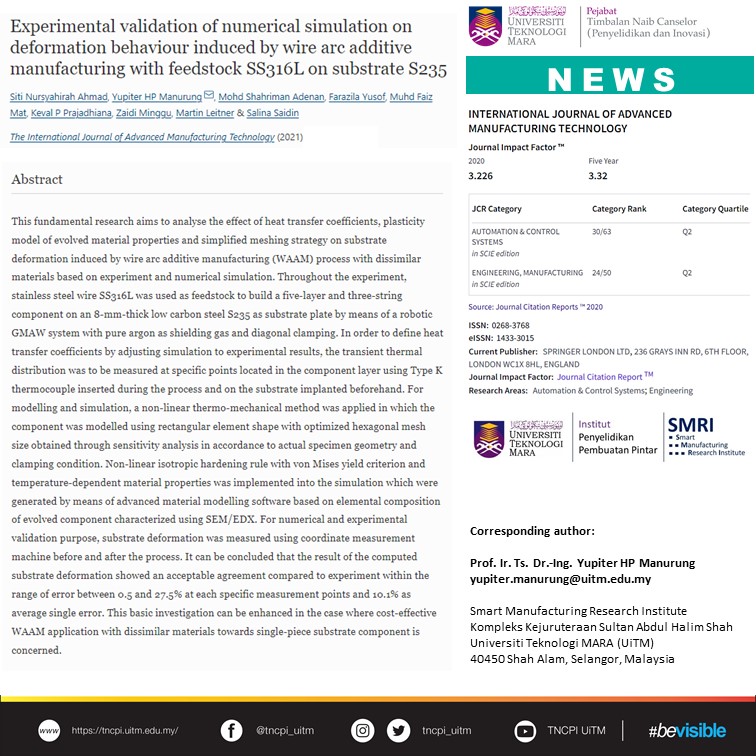
“Experimental Validation of Numerical Simulation on Deformation Behaviour Induced by Wire Arc Additive Manufacturing with Feedstock SS316L on Substrate S235”
This fundamental research aims to analyse the effect of heat transfer coefficients, plasticity model of evolved material properties and simplified meshing strategy on substrate deformation induced by wire arc additive manufacturing (WAAM) process with dissimilar materials based on experiment and numerical simulation.
Throughout the experiment, stainless steel wire SS316L was used as feedstock to build a five-layer and three-string component on an 8-mm-thick low carbon steel S235 as substrate plate by means of a robotic GMAW system with pure argon as shielding gas and diagonal clamping. In order to define heat transfer coefficients by adjusting simulation to experimental results, the transient thermal distribution was to be measured at specific points located in the component layer using Type K thermocouple inserted during the process and on the substrate implanted beforehand. For modelling and simulation, a non-linear thermo-mechanical method was applied in which the component was modelled using rectangular element shape with optimized hexagonal mesh size obtained through sensitivity analysis in accordance to actual specimen geometry and clamping condition. Non-linear isotropic hardening rule with von Mises yield criterion and temperature-dependent material properties was implemented into the simulation which were generated by means of advanced material modelling software based on elemental composition of evolved component characterized using SEM/EDX. For numerical and experimental validation purpose, substrate deformation was measured using coordinate measurement machine before and after the process.
It can be concluded that the result of the computed substrate deformation showed an acceptable agreement compared to experiment within the range of error between 0.5 and 27.5% at each specific measurement points and 10.1% as average single error. This basic investigation can be enhanced in the case where cost-effective WAAM application with dissimilar materials towards single-piece substrate component is concerned.
Corresponding author:
Prof. Ir. Ts. Dr-Ing. Yupiter HP Manurung
yupiter.manurung@uitm.edu.my
Smart Manufacturing Research Institute
Kompleks Kejuruteraan Sultan Abdul Halim Shah
Universiti Teknologi MARA (UiTM)
